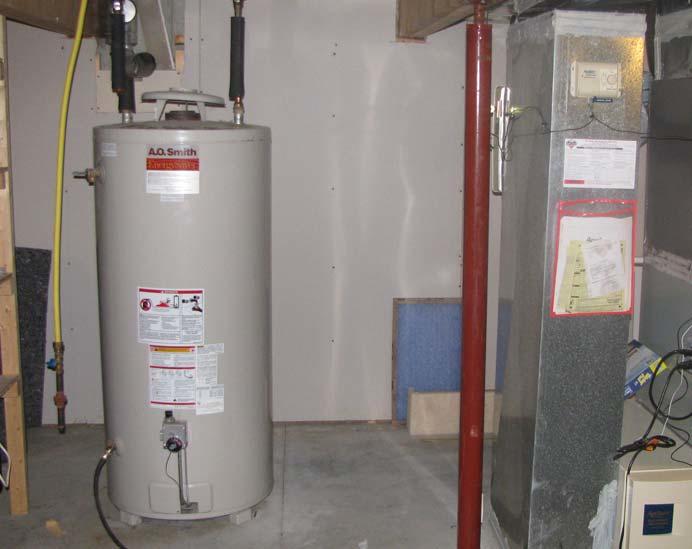Ways to Maintain Your Home's Hot Water System in Good Condition
Ways to Maintain Your Home's Hot Water System in Good Condition
Blog Article
Listed here down the page you can discover a bunch of excellent answers relating to Tips For Maintaining Your Hot Water Heater.

Hot water is vital for day-to-day convenience, whether it's for a refreshing shower or washing recipes. To ensure your hot water system runs effectively and lasts much longer, normal upkeep is vital. This article offers functional ideas and understandings on how to maintain your home's warm water system to avoid disruptions and costly repair work.
Intro
Preserving your home's warm water system could seem complicated, yet with a couple of straightforward steps, you can ensure it operates smoothly for years ahead. This overview covers everything from comprehending your warm water system to do it yourself maintenance suggestions and understanding when to call professional help.
Value of Preserving Your Warm Water System
Normal maintenance not only prolongs the life expectancy of your warm water system yet additionally guarantees it runs efficiently. Overlooking maintenance can cause lowered performance, greater power expenses, and even premature failure of the system.
Signs Your Warm Water System Demands Upkeep
Understanding when your hot water system needs attention can prevent significant concerns. Keep an eye out for indications such as inconsistent water temperature, strange sounds from the heater, or rusty water.
Flushing the Hot Water Heater
Purging your water heater removes sediment build-up, boosting effectiveness and extending its life.
Checking and Changing Anode Rods
Anode poles avoid corrosion inside the tank. Evaluating and changing them when worn out is crucial.
Facility Issues Calling For Expert Aid
Examples consist of major leakages, electrical troubles, or if your water heater is consistently underperforming.
Routine Professional Maintenance Benefits
Professional maintenance can consist of thorough evaluations, tune-ups, and ensuring conformity with safety standards.
Examining and Changing Temperature Setups
Changing the temperature level setups makes certain optimum efficiency and safety.
DIY Tips for Maintenance
You can perform several maintenance tasks yourself to keep your hot water system in top condition.
Checking for Leaks
Routinely examine pipes and connections for leaks, as these can result in water damages and greater expenses.
Comprehending Your Hot Water System
Before diving into maintenance tasks, it's useful to understand the standard components of your hot water system. Usually, this includes the hot water heater itself, pipelines, anode rods, and temperature controls.
Regular Monthly Upkeep Tasks
Routine month-to-month checks can help catch small concerns prior to they escalate.
Evaluating Pressure Relief Valves
Evaluating the stress safety valve guarantees it functions correctly and avoids extreme stress build-up.
Insulating Pipelines
Shielding warm water pipelines lowers warmth loss and can conserve power.
When to Call a Specialist
While do it yourself upkeep is useful, some problems need professional expertise.
Verdict
Routine maintenance of your home's hot water system is crucial for effectiveness, durability, and cost financial savings. By complying with these tips and recognizing when to look for professional help, you can make sure a reputable supply of hot water without unanticipated interruptions.
How to Maintain an Instant Hot Water Heater
Before tinkering with your hot water heater, make sure that it’s not powered on. You also have to turn off the main circuit breaker and shut off the main gas line to prevent accidents. Also turn off the water valves connected to your unit to prevent water from flowing into and out of the appliance. 2. When you’re done, you have to detach the purge valves’ caps. These look like the letter “T†and are situated on either side of the water valves. Doing so will release any pressure that has accumulated inside the valves while at the same time avoid hot water from shooting out and burning your skin. 3. When the purge valves’ caps are removed, you have to connect your hosing lines to the valves. Your unit should have come with three hoses but if it didn’t, you can purchase these things from any hardware or home repair shops. You can also get them from retail stores that sell water heating systems. Read the user’s manual and follow it to complete this task properly. When the hosing lines are connected, open the purge port’s valves. 4. You should never use harsh chemical cleaners or solutions when cleaning your unit. Make use of white vinegar instead. It should be undiluted and you’ll probably use about 2 gallons. 5. Now flush your water heater. This task should probably take about 40 minutes. We can’t give you specific directions for this because the procedure is carried out depending on the type, model and brand of your heater. With that being said, refer to the user’s manual. 6. When you’re done draining the unit, you have to turn off the purge port valves again. Remove the hosing lines that you earlier installed on each of the water valves. Put the valve caps (purge port) back in their respective places and be very careful so as not to damage the rubber discs that are found inside these caps. 7. Now that everything’s back in place, check your user’s manual again to find out how to reactivate your water heating system. 8. Once it is working, turn one of your hot water faucets on just to let air pass through the heater’s water supply pipes. Leave the tap on until water flows smoothly out of it. https://www.orrplumbing.com/blog/2014/september/how-to-maintain-an-instant-hot-water-heater/

We were introduced to that editorial on Tips on Maintaining a Water Heater through an acquaintance on our other blog. Loved our posting? Please quickly share it. Help another person locate it. Thank you for being here. Kindly stop by our site back soon.
Call Today Report this page